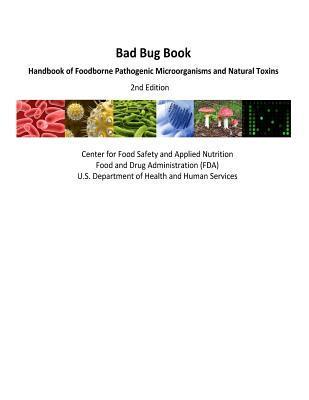Food safety is a complex issue that has an impact on all segments of society, from the general public to government, industry, and academia. The second edition of the Bad Bug Book, published by the Center for Food Safety and Applied Nutrition, of the Food and Drug Administration (FDA), U.S. Department of Health and Human Services, provides current information about the major known agents that cause foodborne illness. The information provided in this handbook is abbreviated and general in nature, and is intended for practical use. It is not intended to be a comprehensive scientific or clinical reference. Under the laws administered by FDA, a food is adulterated if it contains (1) a poisonous or otherwise harmful substance that is not an inherent natural constituent of the food itself, in an amount that poses a reasonable possibility of injury to health, or (2) a substance that is an inherent natural constituent of the food itself; is not the result of environmental, agricultural, industrial, or other contamination; and is present in an amount that ordinarily renders the food injurious to health. The first includes, for example, a toxin produced by a fungus that has contaminated a food, or a pathogenic bacterium or virus, if the amount present in the food may be injurious to health. An example of the second is the tetrodotoxin that occurs naturally in some organs of some types of pufferfish and that ordinarily will make the fish injurious to health. In either case, foods adulterated with these agents are prohibited from being introduced, or offered for introduction, into interstate commerce. Our scientific understanding of pathogenic microorganisms and their toxins is continually advancing. When scientific evidence shows that a particular microorganism or its toxins can cause foodborne illness, the FDA may consider that microorganism to be capable of causing a food to be adulterated. Our knowledge may advance so rapidly that, in some cases, an organism found to be capable of adulterating food might not yet be listed in this handbook. In those situations, the FDA still can take regulatory action against the adulterated food. The agents described in this book range from live pathogenic organisms, such as bacteria, protozoa, worms, and fungi, to non-living entities, such as viruses, prions, and natural toxins. Included in the chapters are descriptions of the agents' characteristics, habitats and food sources, infective doses, and general disease symptoms and co











